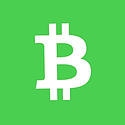Relative Currency Strength
The USD Index was not particularly strong in the past week, as it spent the biggest part of the period below the baseline. Nevertheless, it did manage to finish the period outside the depreciation region and notably outperform three of its observed peers, with the Greenback gaining 0.78% against the Swedish krona, 0.57% against the single currency, and 0.33% against the Swiss franc. The yearly change of the index slipped further into negative area compared to the period ending on Friday, while the monthly and half-yearly figures both went up. Meanwhile, the dollar weakened the most against its Canadian counterpart, losing 0.78% over the week, and yielded 0.33% and 0.26% to the Aussie and the pound.
The past period covered several important U.S. data releases, but the USD Index was not keen on displaying acute reaction to the news. The general tendency of the index change during the first part of the period was decreasing. The surge in durable goods orders and unexpected consumer optimism reported on Tuesday did prompt the index up, but the subsequent decline swiftly erased the gains, and the gauge tumbled to its minimum value. The downslide stopped on Thursday, when the second GDP estimate reported a faster-than-expected growth and the jobless claims numbers offered another sign of improvement in labor market. On Friday, the rise in Chicago PMI and the Michigan ICS offered a final push, and the USD Index finished the period with a climb from –0.3 to +0.02 points.
Volatility
Despite the fact that the week started with high volatility values, as a whole it was rather calm. The portion of elevated volatility for both market and USD was only 23%, which is lower than usual. Moreover, the fact that high volatility was observed in 16% of time for some components and 40% for others, pointed out that the turbulence on the market was caused by USD only in relatively few cases. Low volatility indexes readings – average values mostly below 0.9 – suggested the same. optimistic Australian private capital expenditure announcement and Canadian GDP release, respectively. The peaks of components’ volatilities also were not provoked by the news on U.S. economy.
For example, the greatest spikes of AUD/USD and USD/CAD volatility indexes, which exceeded 3.0 mark, took place against the background of optimistic Australian private capital expenditure announcement and Canadian GDP release, respectively.
The period started with unusually high 1.67 value of USD Volatility Index, caused by the weekend’s Jackson Hole symposium, but reduced shortly. Afterwards it did not show values significantly above historical average till Thursday, when higher-than-expected preliminary GDP and pending home sales numbers as well as mixed data on jobless claims raised USD Volatility Index to 1.54 mark. The most conspicuous USD volatility spike occurred on Friday, after the releases of PMI and ICS, when the index reached 1.95 level.
Currency Significance
The USD significance measure was gradually declining throughout the period, but still held above the significance threshold of 0.3. The composite was among the top-three in terms of maximum and average values, yielding only to the New Zealand’s significance gauge and sharing the levels with the Canadian and the Australian dollars. The component correlations with USD/EUR mostly kept within their historical limits, excepting the combinations with USD/GBP, USD/CAD, and USD/SEK that diverged from the norm by shifting up.
The composite started the period on its maximum levels, the Greenback’s impact high after the Jackson Hole symposium. However, the measure fell below 0.5 by Wednesday, and from there on was trapped between 0.35 and 0.5. A rapid decline started early on Friday, as the Euro took the lead with its own significance measure jumping from 0.15 to 0.4 around the release of German retail sales. The USD composite’s recovery, however, was even more rapid, and it skyrocketed back to the beginning of the week levels, as the Greenback reinforced its positions against the background of strong purchasing managers’ and consumer sentiment indexes.
This overview can be used only for informational purposes. Dukascopy SA is not responsible for any losses arising from any investment based on any recommendation, forecast or other information herein contained.
Recommended Content
Editors’ Picks
AUD/USD extends its upside above 0.6600, eyes on RBA rate decision

The AUD/USD pair extends its upside around 0.6610 during the Asian session on Monday. The downbeat US employment data for April has exerted some selling pressure on the US Dollar across the board. Investors will closely monitor the Reserve Bank of Australia interest rate decision on Tuesday.
EUR/USD: Optimism prevailed, hurting US Dollar demand

The EUR/USD pair advanced for a third consecutive week, accumulating a measly 160 pips in that period. The pair trades around 1.0760 ahead of the close after tumultuous headlines failed to trigger a clear directional path.
Gold holds below $2,300, Fedspeak eyed

Gold price loses its recovery momentum around $2,295 on Monday during the early Asian session. Investors will keep an eye on Fedspeaks this week, along with the first reading of the US Michigan Consumer Sentiment Index for May on Friday.
Bitcoin Cash could become a Cardano partnerchain as 66% of 11.3K voters say “Aye”

Bitcoin Cash is the current mania in the Cardano ecosystem following a proposal by the network’s executive inviting the public to vote on X, about a possible integration.
Week ahead: BoE and RBA decisions headline a calm week

Bank of England meets on Thursday, unlikely to signal rate cuts. Reserve Bank of Australia could maintain a higher-for-longer stance. Elsewhere, Bank of Japan releases summary of opinions.